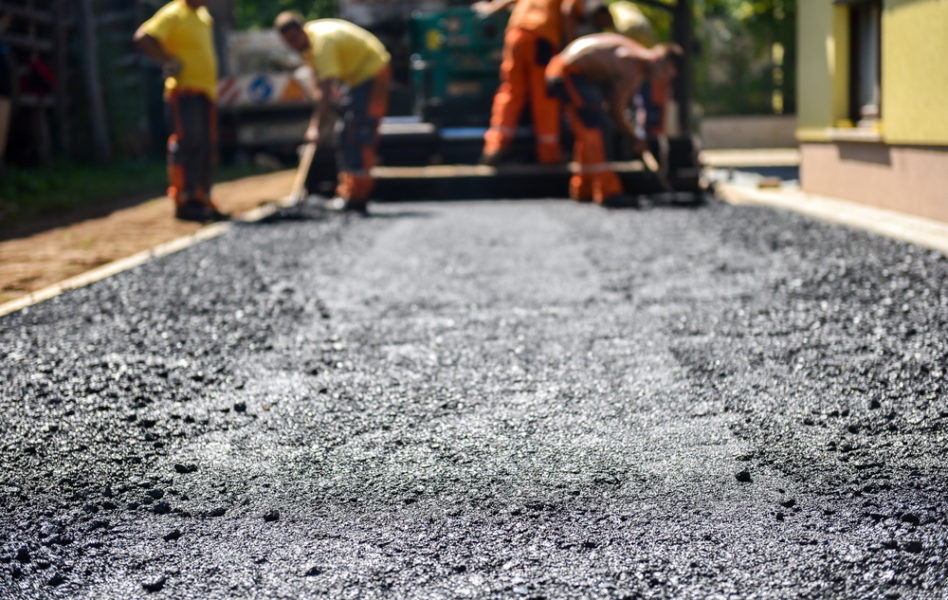Experience the Difference: Hot Mix Asphalt Paving for Regrading Projects
Experience the Difference: Hot Mix Asphalt Paving for Regrading Projects
Blog Article
Unlocking the Secrets of Hot Mix Asphalt Modern Technology
Checking out the depths of warm mix asphalt innovation uncovers a globe where meticulous processes and precise formulations converge to shape our roads and facilities. The combination of binders, fillers, and accumulations isn't simply a construction job however a critical orchestration of longevity and efficiency.
Importance of Warm Mix Asphalt
Hot Mix Asphalt plays a vital duty in modern-day framework development due to its sturdiness and cost-effectiveness. As the most frequently made use of leading product for roadways, freeways, and parking lots, Hot Mix Asphalt provides a range of benefits that add to its relevance in building projects.
The toughness of Warm Mix Asphalt originates from its make-up, which consists of accumulations, binder, and filler products that are carefully selected and mixed to meet specific efficiency needs. This specific mix leads to a flexible and solid sidewalk that can withstand regular use without substantial damage. Hot Mix Asphalt is 100% recyclable, more boosting its sustainability and environmental benefits. Overall, the relevance of Warm Mix Asphalt in infrastructure development can not be underrated, as it proceeds to be a cornerstone of modern-day building and construction methods.
Elements of Asphalt Mixes
The structure of asphalt mixes includes thoroughly picked aggregates, binder, and filler products that are essential for attaining particular efficiency requirements. Accumulations are the key element of asphalt blends, offering toughness and stability. These accumulations can be natural, such as gravel or smashed stone, or synthetic, like recycled products from old pavements. The binder, normally bitumen or asphalt cement, holds the aggregates together and provides versatility and sturdiness to the mix. The option of the binder is important as it straight affects the mix's performance in different climate condition. Fillers, such as hydrated lime or Portland concrete, are made use of to improve the mix's workability and aging resistance. Angled Parking.
The mix and percentage of these parts play a significant role in identifying the high quality and performance of the asphalt mix. Engineers thoroughly develop the mix to satisfy specific demands, thinking about variables like website traffic quantity, environment conditions, and pavement lifespan. Proper selection and harmonizing of aggregates, binder, and fillers are important for producing resilient, lasting asphalt pavements.
Mixing and Manufacturing Strategies

Once the aggregates are chosen, the binder, commonly asphalt concrete, is included to bind the products with each other. The binder's top quality and amount dramatically impact the mix's flexibility, resistance, and strength to ecological aspects. Furthermore, fillers like hydrated lime or Portland cement might be included to improve certain attributes of the asphalt mix, such as its workability or wetness resistance.
During manufacturing, the accumulations and binder are heated up, commonly between 250-325 ° F(121-163 ° C ), to assist in mixing and make sure appropriate layer of the accumulations. The blending process must be complete to accomplish a homogeneous mix that promotes the wanted performance characteristics of the asphalt. Numerous methods, such as batch blending or drum blending, are employed to accomplish premium web link and consistent asphalt blends for building projects.
Variables Impacting Asphalt Performance
Aspects affecting asphalt performance include an array of variables that affect the longevity, durability, and general top quality of asphalt pavements. One essential variable is the quality of materials utilized in the asphalt mix.

Style factors to consider, such as sidewalk density and water drainage, are important in making sure the lasting efficiency of the asphalt sidewalk. By meticulously considering these specialists, designers and aspects can maximize asphalt performance and improve the service life of pavements.
Sustainable Practices in Asphalt Modern Technology

In addition, the growth of warm-mix asphalt (WMA) technologies has actually obtained grip over the last few years. WMA allows for the production and positioning of asphalt blends at lower temperatures contrasted to standard hot-mix asphalt, leading to reduced power usage and greenhouse gas discharges. The use of porous asphalt blends can help minimize stormwater overflow issues by allowing water to penetrate with the sidewalk and into the ground, promoting all-natural water filtration and reenergize processes. By implementing these lasting methods, the asphalt sector can contribute to building a much more like it eco pleasant and resilient facilities network.
Verdict
Finally, warm mix asphalt technology plays a critical duty in modern infrastructure advancement because of its sturdiness and cost-effectiveness. By very carefully balancing parts, employing correct blending methods, and taking into consideration numerous variables, engineers can produce top quality asphalt blends that withstand heavy website traffic tons and harsh weather problems. Embracing lasting methods, such as making use of recycled products and warm-mix technologies, better boosts the ecological kindness of asphalt innovation.
Mixing and manufacturing strategies in warm mix asphalt technology involve the precise mix and handling of aggregates, binder, and fillers to create a durable and high-performance asphalt mix.Aspects influencing asphalt performance incorporate a variety of variables that impact the resilience, longevity, and total high quality of asphalt pavements. Lasting practices in asphalt modern technology include various initiatives intended at decreasing the environmental effect of asphalt production and paving procedures. By incorporating redeemed asphalt pavement (RAP) and recycled asphalt shingles (RAS) right into new asphalt blends, the industry can dramatically minimize the consumption of raw products and energy, while additionally decreasing land fill waste.
WMA allows for the manufacturing and placement of asphalt blends at lower temperature levels find more contrasted to standard hot-mix asphalt, resulting in reduced energy intake and greenhouse gas discharges.
Report this page